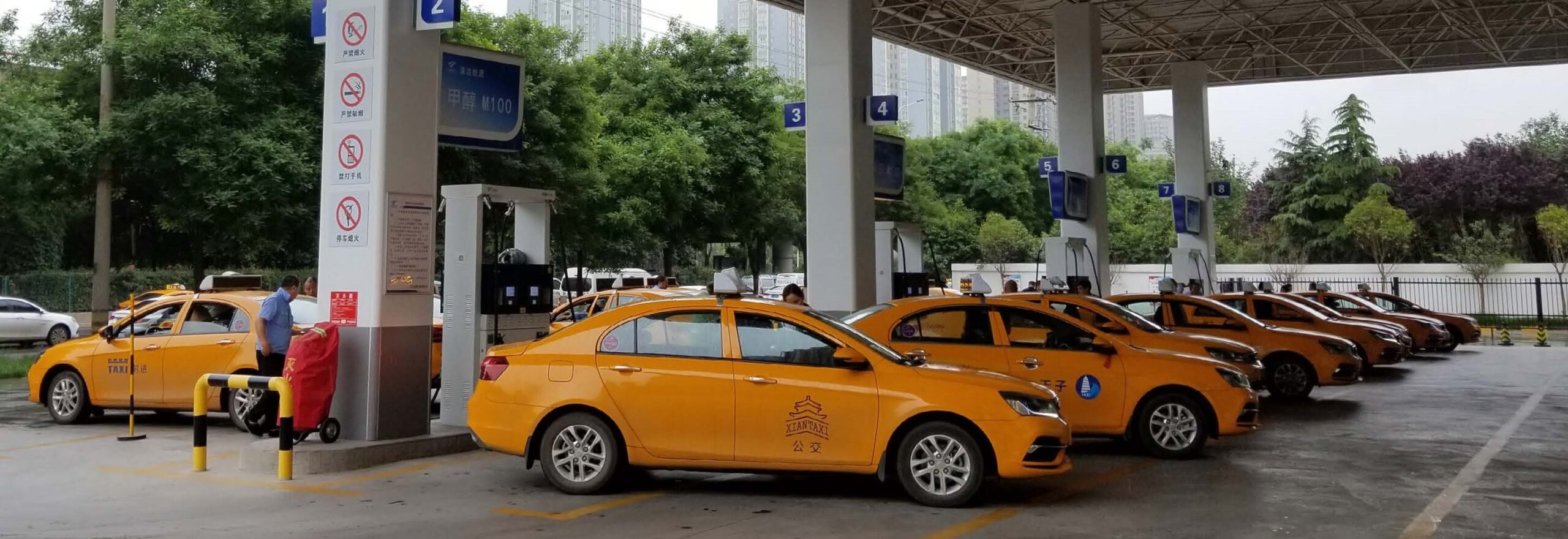Passenger & Cargo Vehicle Fuel
Methanol is an affordable substitute for gasoline and diesel in countries that are looking to transition away from fuels that result in high levels of air pollution. Methanol’s efficient combustion, safety, ease of distribution and wide availability around the world make it an attractive alternative fuel for transportation. Methanol can be used as a transportation fuel in four ways:
| 1 | Additives or fuel blends |
| 2 | Fuel for passenger vehicles |
| 3 | Fuel for public transportation |
| 4 | Fuel for heavy-duty vehicles |
Additives or fuel blends – Methanol is used to manufacture methyl tertiary-butyl ether (MTBE), a gasoline additive that reduces tailpipe air emissions, and to produce fuels like biodiesel which is a diesel alternative. We anticipate methanol demand for biodiesel and MTBE to reach approximately 17 million tonnes per year in 2028.
Methanol is also used in gasoline blends around the world. An early adopter, China has been using methanol and methanol blends since the 1980s. Methanol low-level gasoline blends are in place in the U.K., Israel, and India, with India also trialling methanol diesel blends. Other countries— including France, Germany, Italy, Denmark, Trinidad and Tobago, and some African nations—continue assessments for low-level methanol fuel blending commercialization.
Fuel for passenger vehicles – In China, increasingly stringent air quality standards are supporting the adoption of methanol as a cleaner-burning vehicle fuel. By the end of 2023, approximately 140 M100 (100 per cent methanol fuel) filling stations were operating in China’s Shaanxi, Shanxi, Gansu and Guizhou provinces to service approximately 30,000 M100 sedans and methanol hybrid passenger cars (running on 100 per cent methanol). Collectively, this demand represents approximately 500,000 tonnes of methanol per year.

Fuel for public transportation – In India, the Bangalore Metropolitan Transport Corporation is conducting a pilot running about 80-100 city buses on 15 per cent methanol blended fuel (MD15). MD15 reduces air pollution (particulate matter, NO× and SO×) by 20 per cent, is less expensive than diesel and can be used by diesel vehicles without any modifications. We expect India to expand the pilot program and introduce similar programs in others cities.
Fuel for heavy-duty vehicles – Methanol is a diesel substitute for heavy-duty vehicles. Commercial trucks are another emerging opportunity in China, where Geely Auto Group has developed the world’s first pure methanol combustion heavy-duty truck. As of 2023 there were 4,000 methanol heavy-duty trucks in operation in China. Geely has ambitions to manufacture and market up to 50,000 such trucks by 2026, representing methanol demand of approximately 5 million tonnes per year.
Cleaner-Burning Thermal Applications
Methanol can be used as a fuel for thermal applications, including industrial boilers, kilns, heating furnaces and cooking fuel. When used in thermal applications, it has significantly lower air emissions (NOx, SOx, and PM) than coal and other fossil fuels.
Industrial uses, heating and potential for power generation – Growing demand for methanol as an industrial boiler and kiln fuel has been driven largely by China, where industrial boilers are used extensively to generate heat and steam for various industrial applications and kilns. Industrial boilers have traditionally been coal-fueled in China. However, environmental regulations being phased in by the Chinese government are prompting a transition to cleaner burning fuels (including methanol) that can reduce impacts on local air quality and related human health. Chinese residential buildings, restaurants and homes are also using methanol as a lower air emission and affordable heating alternative to burning coal.
Cooking fuel – Methanol has been used as a cleaner-burning cooking fuel in Africa, China and India for the past two decades. A 2023 study by China Association of Alcohol and Ether Clean Fuel and Automobiles found that around 60% of China’s use of methanol as energy (excluding MTBE and MTO) is as cooking fuel. With 2.6 billion people around the globe relying on solid biomass, kerosene or coal as their primary cooking fuel, methanol could play a role in scaling access to cleaner cooking fuels.
Methanex recently worked with industry partners to register the revision of the mandatory standard for alcohol-based liquid fuels in China (GB 16663), which is expected to be published in 2025. This standard will be an important reference for government agencies in supervising the use of methanol as a fuel for cooking stoves and boilers. We have previously supported similar efforts in the development of standards for industrial boilers and kilns.
To read more about methanol as an alternative fuel, please visit page 36 of the 2023 Sustainability Report.

